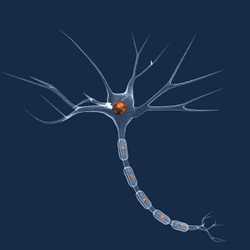| Regeneration is
committed to ataxia research. We are also reaching out
to more people affected by ataxia than ever before.
Research
Regeneration has supported and funded a variety of research projects over the years. We focus and give priority to those projects that are innovative, show a clear pathway to therapeutic benefit or attempt to improve the quality of life of people affected by ataxia. Our ultimate vision is to help find a cure for the ataxias.
Here are some examples of these projects:
 Rehabilitation Management and Care: Exploring long term care provision for
people with Friedreich’s ataxia and their families. Rehabilitation Management and Care: Exploring long term care provision for
people with Friedreich’s ataxia and their families.
(Friedreich’s Ataxia – Rehabilitation Management Research Group)
 Gene Therapy – Using advanced adenoviral and lentiviral technologies to
deliver therapeutic genes to neurones to halt the degenerative changes associated with Friedreich’s ataxia. Gene Therapy – Using advanced adenoviral and lentiviral technologies to
deliver therapeutic genes to neurones to halt the degenerative changes associated with Friedreich’s ataxia.
(Professor J Uney, Dr J Howarth. URCN and MRS Centre for Plasticity, Dept
of Medicine, University of Bristol)
 A Retrospective study: FRDA. Air-Stirrup ankle brace management of
Pes cavus and equinovarus mal alignment. A Retrospective study: FRDA. Air-Stirrup ankle brace management of
Pes cavus and equinovarus mal alignment.
(Friedreich’s Ataxia – Rehabilitation Management Research Group)
 Development of Stem cell therapies for Friedreich’s ataxia. Development of Stem cell therapies for Friedreich’s ataxia.
(Dr Wilkins, Professor Scolding. Institute of Clinical Neurosciences,
University of Bristol).
 Rehabilitation –FRDA Approaches to management. Flexor spasms –Flexor
withdrawal response in the lower limbs. Rehabilitation –FRDA Approaches to management. Flexor spasms –Flexor
withdrawal response in the lower limbs.
(Friedreich’s Ataxia – Rehabilitation Management Research Group)
|  Epigenetic modifiers as potential disease modifying factors in Friedreichs Ataxia. Epigenetic modifiers as potential disease modifying factors in Friedreichs Ataxia.
(Professor R Festenstein. Imperial College London).
 FRDA. The role of frataxin. Understanding how the effects of the mutation in
the frataxin gene influence cell function. FRDA. The role of frataxin. Understanding how the effects of the mutation in
the frataxin gene influence cell function.
(Dr S Chamberlain. Imperial College London).
 Rehabilitation Management. FRDA – A Review of the literature and Data. Rehabilitation Management. FRDA – A Review of the literature and Data.
(Friedreich’s Ataxia – Rehabilitation Management Research Group)
|
 |
Support Services
We help people and their families
by providing support and information services that they
cannot access from other local sources. All of our services
are tailored to meet needs that have been identified
by families affected by ataxia. We have developed close
links with various other local care and support organisations.
This means that if we are not currently providing a
service that a person needs, we may be able to direct
them to other organisations that might be in a position
to assist.
Here are some of the ways we try
to help:-
|